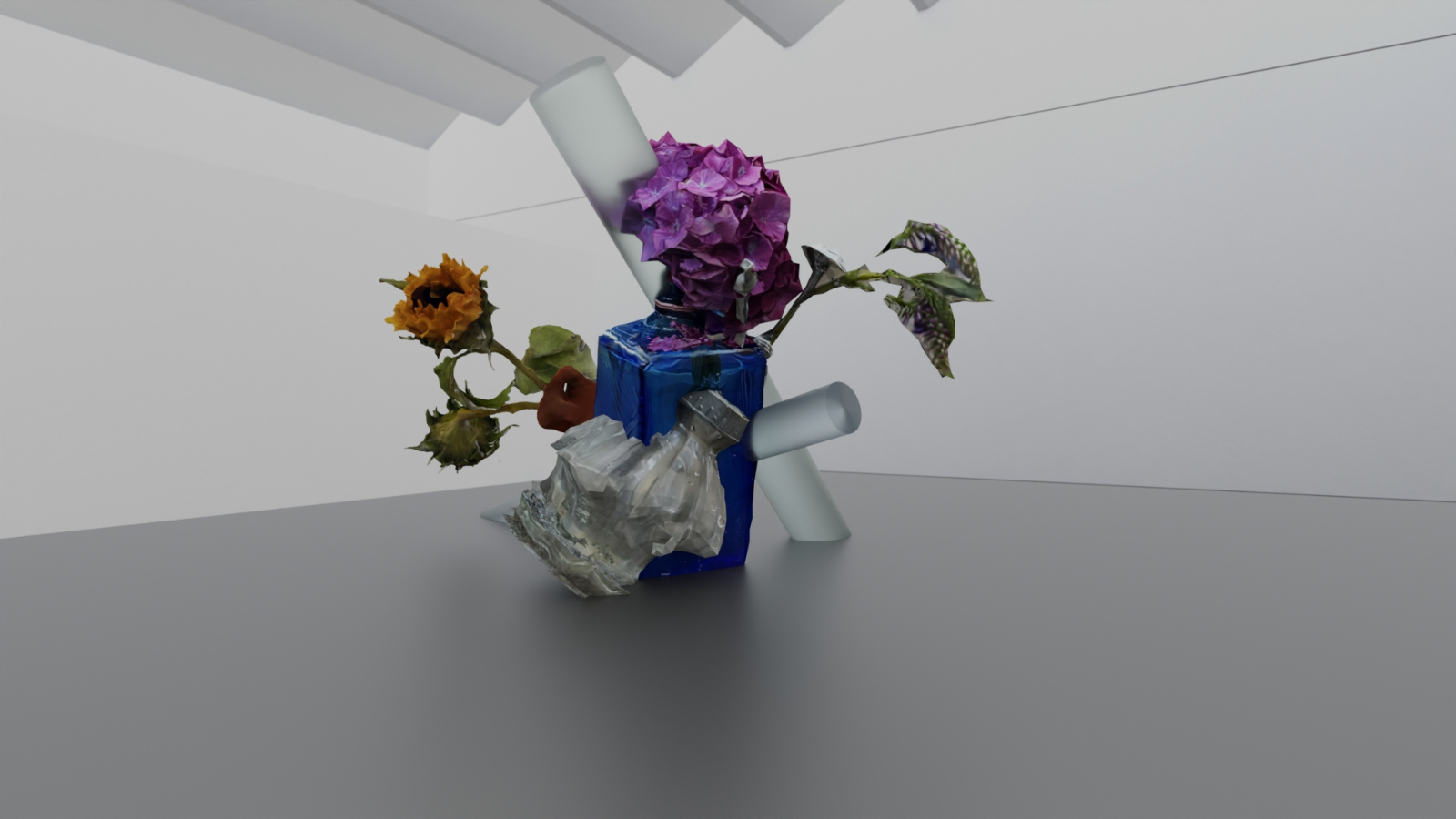Following on from SCANITAS, Tom Milnes’ solo show at Studio KIND, SCANITAS:lab presents in-process experiments in 3D sculptural and 2D printed works that uncover the nature of 3D-scans and spatial imagery. Exploring the transience of three dimensional imaging methods through the laboratory format, works evolve within the gallery space – highlighting the technology’s limitations in its ability to capture form and space.
Through these evolving works, Milnes explores thematics of glitched still-life imagery as a contemporary take on 17th century Flemish ‘vanitas’ artworks. These works included objects such as exotic fruits in decaying states, precious metal and glass craftware, beautiful dying flowers, and skulls which hold a symbolic significance in their representation of the ephemerality of life. Vanitas works continue to hold high cultural significance – dealing with the duality of human transience whilst providing methods for revealing technological fallibility.
In SCANITAS:lab, the works produced use scans of objects reminiscent of those that appear in the original vanitas paintings. The photogrammetric technology employed by Milnes is confused by anything transparent, reflective, complex, repetitive, or patterned, so the objects appear glitched and indistinct as the image-making technology struggles to understand them. The resulting sculptures and images are warped and stretched, creating a contemporary vanitas to expose the fragility and temporality of both humanity and technology.
The 3D works are presented as paper sculptures using a technique known as Pepakura, a form of paper craft which takes a 3D model and creates printable, flat nets of the object that can be cut and folded to form a 3D paper sculpture. The printed 2D works include glitched 3D model images and 3D scan textures that create layered collage works; as well as pen-plotted images of 3D-scans and photographic fakes of sculptural works.
Opening Event
Friday 5 September, 6-8pm





